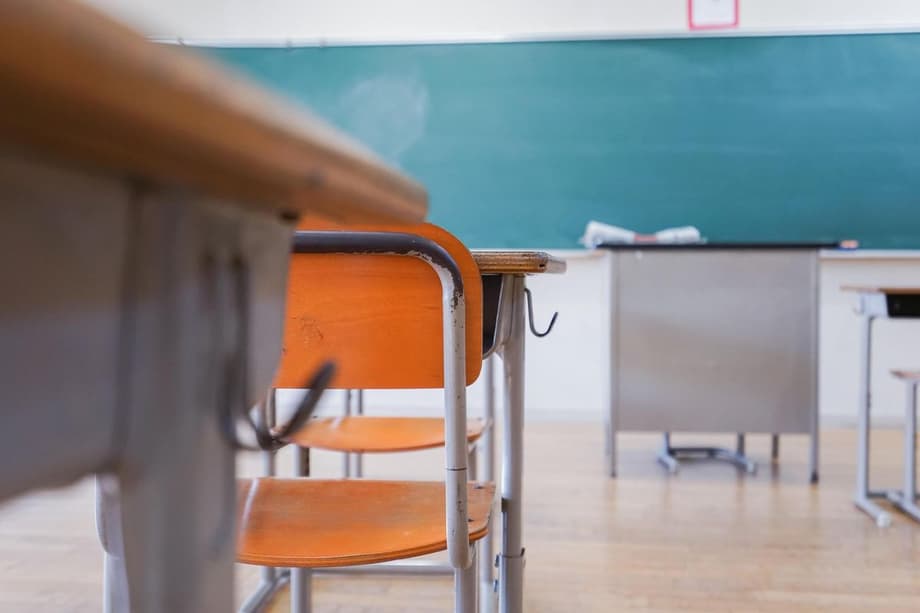A profession losing its shine
Teacher training in South Korea, once a prized route to a stable career, is losing appeal. New data show that more students are leaving universities of education than at any time in recent memory. The Korean Educational Development Institute (KEDI) reports a 4.2 percent dropout rate among students at education universities in 2024, matching the previous year and marking a record high for a second straight year. In practical terms, this means roughly one in 25 future teachers walked away from their studies. Many trainee teachers say the work now looks less like education and more like customer service, with growing expectations to absorb complaints and demands without firm protections for teacher authority.
- A profession losing its shine
- Why are teacher trainees quitting?
- Shrinking jobs and fiercer exams
- Inside the classroom pressures
- Pay and prestige in a changing economy
- What international research shows
- Policy choices and early signs of change
- How universities of education can respond
- What parents and communities can do
- Key Points
The trend did not arrive overnight. Until 2018, dropout rates at education universities remained below 1 percent. The rate then climbed to 1.5 percent in 2019, 1.7 percent in 2020, 2.4 percent in 2021, and 3.2 percent in 2022 before rising to about 4 percent in both 2023 and 2024. The figure is now approaching the level seen at general universities, which recorded about 5.3 and 5.4 percent over the same period. Even the most prestigious teacher training institutions have felt the shift, with 103 students leaving Seoul National University of Education and 105 leaving Gyeongin National University of Education last year, according to the Ministry of Education.
Universities of education occupy a special place in South Korea. They specialize in preparing elementary school teachers and have long been considered among the toughest schools to enter. For many years, admission was seen as a near guarantee of public sector employment in a respected profession. That assumption no longer holds. With fewer teaching positions available and growing concerns about classroom conditions, more students are concluding that the degree may not deliver on its past promise.
What is a university of education?
South Korea’s universities of education, mostly national institutions, are designed to train elementary school teachers through a focused curriculum and extensive student teaching. Their alumni make up a large share of the elementary teacher workforce. The path traditionally led directly from graduation to a teacher certification exam and then to a classroom appointment. Today, the chain has weakened. Even those who pass the exam may not receive an appointment for some time, and some graduates discover limited options outside teaching.
Why are teacher trainees quitting?
Many prospective teachers point to working conditions. Emotional labor has increased as parents raise more complaints and expect rapid attention. Classroom management has grown harder, yet protections for teacher authority remain uneven. Pay, while stable, often trails the salaries offered by large companies for graduates with similar academic credentials. The picture that emerges is a high-stress job with modest compensation and frequent friction with parents.
Surveys of current teachers echo that unease. The Korea Federation of Teachers Associations found that only 19.7 percent of respondents would choose teaching again if they had a second chance, the lowest figure since the survey began in 2012. Another nationwide poll by the Korean Federation of Teachers Unions in May, covering more than 8,000 teachers across elementary, middle, and high schools, reported that 58 percent were considering transferring or resigning within a year. Among those weighing a move, 77.5 percent cited excessive parental complaints and infringements on teacher authority as the top reason.
The role of parental complaints
Public scrutiny heightened after the death of a young teacher at Seoi Elementary School in Seoul in 2023, a case that drew attention to the pressures teachers can face from parents. A similar case reported this year on Jeju Island underscored ongoing anxiety in the profession. Advocates argue that clearer boundaries for parent interactions, faster and fair complaint procedures, and stronger legal protections for teachers are essential to restore a sense of safety and dignity at work.
Shrinking jobs and fiercer exams
Demographic change has also reshaped the calculus. The student population is declining as South Korea’s birthrate falls, which means fewer homerooms and fewer new teachers. Hiring plans have tightened in many regions. The teacher certification exam remains the gateway into the classroom, yet passing the exam no longer ensures prompt placement. More candidates find themselves qualified but waiting without a post.
That shift is jolting for students who entered universities of education expecting a clear path into public education. When openings shrink, even strong candidates can face delays. The risk of long waits or uncertain prospects makes the degree less attractive to top high school graduates who now see more lucrative paths in technology, finance, healthcare, and other private sector fields.
How a demographic crunch shrinks hiring
Fewer children produce cascading effects. Schools combine classes, districts trim hiring, and the pipeline narrows. Universities of education feel the stress first, since they educate cohorts sized for the past. A smaller school age population reduces the number of homerooms that need teachers, especially in areas outside major metropolitan centers. The result is stiffer competition for placements and growing frustration among graduates who prepared extensively for roles that are now less available.
Inside the classroom pressures
Teachers describe a job that is increasingly complex. Social and emotional needs among students expanded during and after the pandemic, while academic expectations remain high. Responding to parents requires time, diplomacy, and documentation. Navigating disputes over discipline or learning supports can become an additional job on top of instruction. Many teachers say they spend hours on paperwork and messaging platforms, often late into the evening.
Teacher authority is also contested ground. South Korean law rightly protects children from abuse and mistreatment. Yet ambiguous guidelines and a fear of false accusations have left many teachers feeling exposed. Educators call for clearer protocols that protect students and also give teachers a fair process when disputes arise. When boundaries are unclear, teachers tend to take a defensive posture, which can drain morale and time from teaching.
Mental health and safety
The tragedies in Seoul and Jeju prompted nationwide reflection on teacher well-being. Educators say that an accessible mental health system for teachers, confidential counseling, and training for school leaders in crisis response can help. Principals and district offices play a vital role. When school leaders set clear expectations for parent engagement and respond quickly to harassment or intimidation, teachers report lower stress and stronger trust in their workplace.
Pay and prestige in a changing economy
Relative pay matters. For decades, a public school teaching job offered a stable salary, respected status, and a predictable career ladder. The private sector has changed the equation. Starting salaries at major companies and growth paths in technology and finance have widened the gap in lifetime earnings. That shift is especially visible to high achieving students who could pursue many fields. When compensation trails competing options, the profession struggles to pull in top candidates and to retain those already on the path.
Prestige has also shifted. Teaching remains a public service with deep social value, yet social media and popular culture often celebrate different career paths. Many students want roles with autonomy, advancement, and clear signals of success. They may fear that constraints in the school system will limit innovation or that the evaluation structure will not reward extra effort. If the profession cannot offer competitive pay, schools can still boost appeal by providing more autonomy, mentoring, and recognition for excellence in the classroom.
The cost of attrition is real. When students leave teacher training programs, universities lose tuition, districts lose potential hires, and novice teachers who might have become experts in a few years exit the pipeline. The result is a younger, less experienced workforce that turns over more often and struggles to stabilize school culture. Over time, that hurts student learning and compounds stress for remaining staff.
What international research shows
Cross country research points to a blend of causes for teacher shortages and attrition. An international analysis of predictors of teacher shortages in 18 countries found that shortages are often linked with poor school resources, low relative pay, and high levels of reported abuse or intimidation of teachers by students. Economic conditions outside schools affect the balance too. When non vocational graduates have strong job prospects elsewhere, teaching becomes harder to staff.
Evidence from early childhood education in Japan and South Korea offers another signal. A 2025 study using international survey data found that teachers build much of their instructional confidence in the first three years of work. Retaining early career teachers appears crucial for quality. The study also suggests targeted professional development, especially during the first years, can raise teaching skills. Although the study focused on early childhood educators, the pattern resonates across K to 12. Supporting new teachers with induction programs, mentoring, and reduced workloads in the first years can boost retention and build a deeper bench of experienced staff.
Policy choices and early signs of change
South Korea’s education authorities and lawmakers are debating how to respond. The menu of options is familiar: improve compensation relative to comparable fields, give teachers more planning time, reduce non teaching tasks, strengthen legal protections against harassment, and invest in mental health supports. Another priority is to align hiring more closely with local needs, so that certification exam success translates into timely placements.
New curriculum priorities also shape demand. Schools are being asked to build digital literacy and AI readiness, yet many regions lack specialized information teachers. Data presented in the National Assembly show that in a number of provinces there are far fewer information teachers than middle and high schools, with some rural regions reaching only a fraction of the positions needed. Rep. Jeong Seong-guk of the People Power Party, speaking about the shortage of information teachers, framed the policy dilemma in direct terms before urging action.
How can schools foster AI talent when there are no teachers to teach AI?
Expanding training for information teachers, funding regional incentives, and offering professional development in AI across subjects can help, but they only address part of the broader challenge. If classrooms remain high pressure environments with weak protection for teacher authority, efforts to expand new subject expertise will struggle to attract and keep staff. Policymakers face a linked problem that includes pay, workload, school climate, parent relations, and local hiring plans.
How universities of education can respond
Teacher training institutions sit at the center of the pipeline. They can act now, even as national policy evolves. One avenue is to strengthen practical preparation. Robust clinical experiences, longer student teaching placements, and structured coaching from master teachers give trainees realistic previews of the job and the support to build confidence. Training can also include clear modules on parent communication, conflict resolution, and legal boundaries, so new teachers know how to handle difficult interactions.
Another step is to broaden career pathways. Some graduates may want to work in education without taking a homeroom. Universities can help students earn credentials in areas like special education support, educational technology, tutoring, after school programming, curriculum development, or child and family services. Clear bridges into related roles can reduce the sense that quitting is the only choice when a classroom post is not available or does not fit.
Finally, campuses can build early warning systems to spot students at risk of departure. Advisors can offer counseling, internship opportunities outside the classroom, or a pause in studies with a path back. Partnerships with local education offices can also increase paid residencies, which give trainees income and hands on experience while districts get extra capacity in schools.
What parents and communities can do
Families and local communities shape the school climate. When parents and teachers communicate through clear channels and respect boundaries, disputes are easier to resolve. Schools can support this by setting transparent complaint processes with firm timelines, discouraging direct contact outside official systems, and protecting staff from harassment. Parent councils and community leaders can model collaboration that keeps the focus on student learning rather than conflict.
Public trust depends on the daily experience of students and teachers. Celebrating classroom successes, offering volunteers for supervised activities, and recognizing teachers who go the extra mile all help. Small changes can reduce stress, from limiting after hours messaging to simplifying paperwork that does not serve students. These shifts do not replace policy reform, but they can improve conditions while larger changes move forward.
Key Points
- KEDI data show a 4.2 percent dropout rate at universities of education in both 2023 and 2024, the highest levels on record.
- Leading teacher training institutions have seen more than 100 students leave in a single year, underscoring the depth of the trend.
- Surveys report low morale: only 19.7 percent of teachers would choose the job again, and 58 percent are considering transferring or resigning.
- Excessive parental complaints and weak protections for teacher authority rank as top reasons for burnout and exits.
- A shrinking student population reduces hiring, making the certification exam more competitive and delaying placements.
- Relative pay and heavy workloads make it harder to attract and retain talent compared with jobs in major companies.
- International research links shortages to low relative pay, poor resources, and hostile school climates, and highlights the value of early career support.
- Information teacher shortages complicate plans for AI and digital literacy, prompting calls for targeted hiring and training.
- Policy options include stronger protections, workload reductions, better pay, mentoring for new teachers, and clearer parent communication rules.
- Universities of education can strengthen practicum, expand alternative education careers, and support students who are at risk of leaving.




